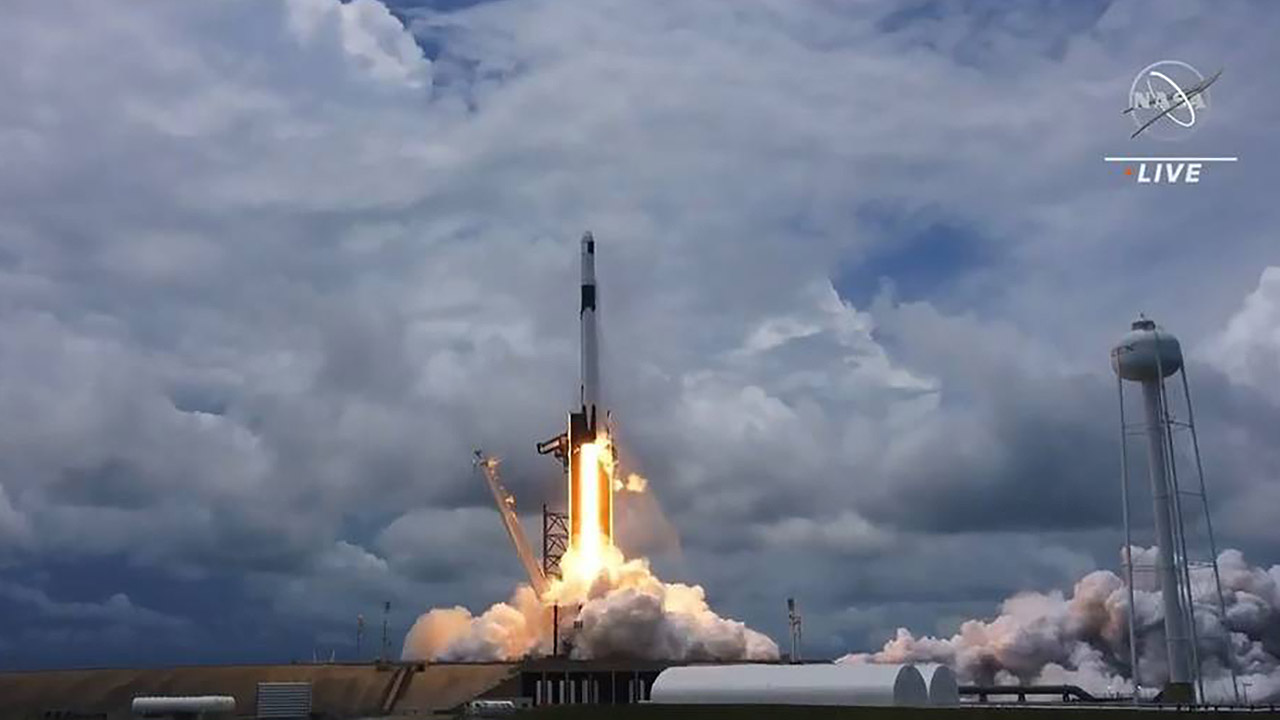SpaceX’s 23rd Commercial Resupply Services (CRS) mission to the International Space Station (ISS) is slated for launch no earlier than August 28 at 3:37 a.m. ET from Kennedy Space Center in Florida. The ISS U.S. National Laboratory is sponsoring multiple payloads on this mission that will bring value to our nation and drive a sustainable market in low Earth orbit.
Below are highlights of ISS National Lab-sponsored payloads that are part of the SpaceX CRS-23 mission to the space station.
An Ultra-Compact Spectral Imager
Nanohmics Inc.
Principal Investigator: Dr. Chris Mann
This technology demonstration project led by Nanohmics, working with the University of Maryland and NASA Langley Research Center, seeks to validate the calibration of an ultra-compact spectral imager in space for hyperspectral imaging of Earth in the visible spectrum. The project will use the MISSE Flight Facility on the exterior of the ISS. Spectral imaging technology has applications in planetary, Earth, and atmospheric sciences, including precision agriculture, mineralogical surveys, machine vision, and defense and medical applications.
Implementation Partner: Aegis Aerospace
ExoLab-9
Magnitude.io
PI: Ted Tagami
The ExoLab-9 mission will investigate how the stress of spaceflight affects the symbiotic relationship of red clover and nitrogen-fixing Rhizobia bacteria. Fifteen red clover seeds will fly to the ISS for this replication mission aiming to confirm root nodulation during spaceflight. Students participating in the mission will grow red clover plants in the 1g environment of Earth as part of the ground control experiment. Then, they will compare results to the flight experiment in the microgravity environment of the ISS. The experiment on the ISS takes places autonomously within a 4U Space Tango CubeLab, while student trials will use the ExoLab ground units. An astronaut will install the CubeLab in the Space Tango locker to power it up and begin transmitting data and images back to Earth.
Implementation Partner: Space Tango
Faraday Research Facility
ProXopS, LLC
PI: Chad Brinkley
The Faraday Research Facility is a multipurpose research facility that interfaces sub-payloads (μLabs) into the ISS EXPRESS Racks. Using commercial off-the-shelf modular components, the Faraday Research Facility provides a standardized multipurpose platform for diverse payload users. Once its capabilities are validated, the Faraday Research Facility will provide another autonomous research facility that may cater to a wide variety of investigators.
Implementation Partner: ProXopS
Making Space for Girls Challenge
Girl Scouts of Citrus Council and SpaceKids Global
PI: Maryann Berry
The 2020 Making Space for Girls challenge, organized by the Girl Scouts of Citrus Council and SpaceKids Global, with support from ProXopS, was open to young female researchers around the United States to propose ideas for experiments that could be conducted onboard the orbiting laboratory. The three winning student experiments, each evaluating the characteristics of living organisms in low Earth orbit, will be carried out onboard the ISS. One experiment will examine microgravity’s effects on ant behavior, another will look at plant growth in space, and the last will explore how brine shrimp (popularized as sea monkeys) move and behave in the low Earth orbit environment.
Implementation Partner: ProXopS
Remote Controlled Nanochannel Implant for Tunable Drug Delivery
Houston Methodist Research Institute
PI: Dr. Alessandro Grattoni
This project will aid in the development of a drug delivery implant that can be remotely controlled to release specific amounts of treatment—a form of individualized medicine. This translational medicine project, which cannot be done on the ground, builds upon results from a previous ISS National Lab-sponsored investigation that sought to better understand fluid flow though very small channels (nanofluidics). This investigation will leverage the Faraday Research Facility, helping to validate its capabilities.
Implementation Partner: ProXopS
Space Durability of 3D Printed Frontal Polymerization Nanocomposites
University of Illinois Urbana-Champaign
PI: Dr. Ioannis Chasiotis
This project will use the MISSE Flight Facility to examine the durability of a new class of 3D-printed polydicyclopentadiene (pDCPD)-based thermosetting polymers, which irreversibly harden when heated and then cooled. The project will provide quantitative data on material erosion that will help determine whether this new class of pDCPD thermosetting polymers can better withstand the harsh space environment when compared with currently used thermoplastics such as Kapton or Teflon. pDCPD is a tough matrix that is used in 3D printed and other rapid composite fabrication technologies for manufacturing structural materials with both Earth- and space-based applications, including solar cells, photovoltaics, insulators.
Implementation Partner: Aegis Aerospace
Student Spaceflights Experiments Program – Mission 15
National Center for Earth and Space Science Education
PI: Dr. Jeff Goldstein
The Student Spaceflight Experiments Program (SSEP) was started in June 2010 by the National Center for Earth and Space Science Education (NCESSE) and gives students across a participating community the ability to design and propose real microgravity experiments to fly in low Earth orbit. To date, SSEP has completed 14 separate missions, reaching hundreds of thousands of students around the world, exposing them to science, technology, engineering, and mathematics (STEM) opportunities in space. This launch includes six separate student investigations from students around the United States. Four of the investigations are evaluating germination techniques in space as potential food production options for astronauts on deep space missions. Another investigation will be observing how tardigrades adapt to spaceflight, and the final investigation will assess aluminum corrosion in space.
Implementation Partner: Nanoracks, LLC







